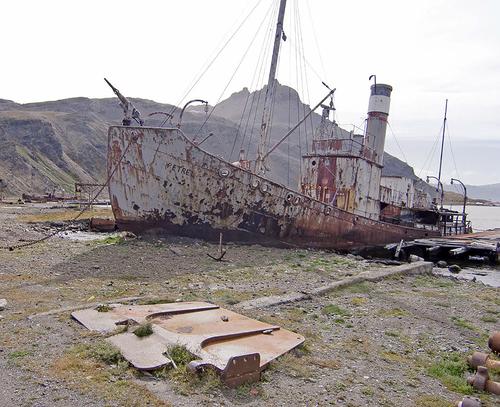长须鲸到南极
Q4 Agricultural and Biological Sciences
引用次数: 0
摘要
长须鲸回归南极在因商业捕鲸而濒临灭绝之后,最近人们观察到南半球的长须鲸大量聚集在南极半岛的岛屿上。一个专门的研究项目目前采用了一套非致命性的鲸类研究方法来调查种群结构、丰度、栖息地利用和迁徙起源,以了解种群状况和恢复情况。本文章由计算机程序翻译,如有差异,请以英文原文为准。

Rückkehr der Finnwale in die Antarktis
Return of the fin whales to Antarctica
After their near-extirpation by commercial whaling, fin whales of the Southern Hemisphere have recently been observed to aggregate in large numbers along the islands of the Antarctic Peninsula. A dedicated research program currently employs a suite of non-lethal cetacean research methods to investigate population structure, abundance, habitat use and migratory origins in order to gain insights into population status and recovery.
求助全文
通过发布文献求助,成功后即可免费获取论文全文。
去求助
来源期刊

Biologie in Unserer Zeit
Agricultural and Biological Sciences-Agricultural and Biological Sciences (all)
CiteScore
0.20
自引率
0.00%
发文量
0
期刊介绍:
Die Biologie avanciert im Eiltempo zur zentralen Wissenschaft dieses Jahrhunderts. Biologie in unserer Zeit gibt Einblicke in komplexe Zusammenhänge und Einsichten in das gesamte Spektrum der Biologie. Namhafte Autoren bringen Ihnen die aufregenden Neuentwicklungen näher - auf verständliche Weise und farbig illustriert. In den Rubriken jeder Ausgabe finden Profis und solche, die es werden wollen: - Neuestes aus Forschung und Anwendung - Witziges, Wesentliches und Rätselhaftes - Historisches Hintergrundwissen - Lesenswertes, Berufe, Hinweise zu Fort- und Weiterbildung und vieles mehr.... Begleiten Sie die Autoren von Biologie in unserer Zeit bei der Forschung oder zu seltenen Lebensräumen und Lebensformen. Nutzen Sie die Rubrik „Das Experiment" zum Nachvollziehen spannender Versuche, lernen Sie verschiedene Bioberufe kennen und lassen Sie sich durch Buchbesprechungen zu neuer Lektüre anregen. Biologie in unserer Zeit ist das Verbandsorgan des Verbandes Biologie, Biowissenschaften und Biomedizin in Deutschland e. V. (VBIO)
 求助内容:
求助内容: 应助结果提醒方式:
应助结果提醒方式:


